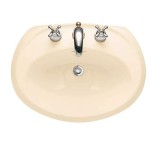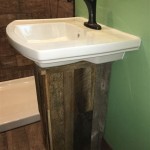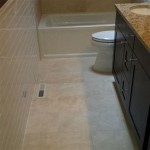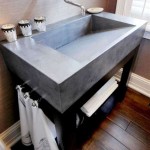How to Clean Bathroom Sink Pipes
Maintaining clean bathroom sink pipes is crucial for a functional and hygienic bathroom. Over time, these pipes accumulate various substances, including hair, soap scum, toothpaste residue, and mineral deposits. This accumulation can lead to slow drainage, unpleasant odors, and, in severe cases, complete blockage. Regular cleaning helps prevent these problems, extending the life of the plumbing system and avoiding potentially costly repairs. Several methods exist for cleaning bathroom sink pipes, ranging from simple solutions using household products to more involved techniques requiring specialized tools. The choice of method often depends on the severity of the clog and the specific materials used in the plumbing.
Understanding the Anatomy of Bathroom Sink Pipes
Before attempting to clean bathroom sink pipes, it is beneficial to understand their basic anatomy. The typical bathroom sink plumbing configuration includes several key components. The drain opening at the bottom of the sink connects to a tailpiece, a straight pipe leading down to the P-trap. The P-trap is a U-shaped pipe designed to hold a small amount of water, creating a seal that prevents sewer gases from entering the bathroom. Beyond the P-trap, the drainpipe connects to the branch drain, which carries wastewater to the main drain line. Each of these components is a potential site for clogs, and understanding their function can aid in identifying the location and nature of the blockage.
The materials used in bathroom sink pipes also influence the appropriate cleaning methods. Older homes often feature pipes made of galvanized steel or cast iron. These materials are more susceptible to corrosion and may be damaged by harsh chemicals. Modern homes typically use PVC (polyvinyl chloride) or ABS (acrylonitrile butadiene styrene) pipes, which are more resistant to corrosion and chemical damage but can still be affected by excessive heat or abrasive cleaning methods. Identifying the pipe material is crucial for selecting a cleaning method that effectively removes the clog without causing damage to the plumbing system.
Furthermore, understanding the underlying cause of the blockage can inform the cleaning approach. A slow drain caused by a buildup of hair and soap scum may be addressed with a simple enzymatic cleaner. However, a complete blockage caused by a foreign object may require physical removal with tools such as a plumber's snake or disassembly of the P-trap. Assessing the symptoms and potential causes is an important first step in effectively cleaning bathroom sink pipes.
Simple Cleaning Solutions: Hot Water and Baking Soda/Vinegar
For minor clogs and preventative maintenance, simple solutions using readily available household products can be highly effective. One of the easiest methods involves flushing the drain with hot water. Run hot water down the drain for several minutes. The heat can help dissolve soap scum and loosen minor obstructions. This method is particularly useful for preventing the buildup of grease and other substances that can solidify over time.
A more potent solution involves combining baking soda and vinegar. Begin by pouring approximately one cup of baking soda down the drain. Follow this with one cup of white vinegar. The chemical reaction between the baking soda and vinegar creates a fizzing action that helps dislodge debris and break down buildup. Allow the mixture to sit in the drain for at least 30 minutes, or preferably overnight, for maximum effectiveness. After the soaking period, flush the drain with hot water to clear away any remaining residue.
This baking soda and vinegar method is generally safe for all types of pipes and is an environmentally friendly alternative to harsh chemical drain cleaners. It is also relatively inexpensive and can be incorporated into a regular maintenance routine to prevent clogs from forming in the first place. However, this method may not be effective for severe blockages or clogs caused by solid objects.
Another variant of this method involves using baking soda and salt. Pour half a cup of baking soda followed by half a cup of salt down the drain. Let it sit for several hours, or overnight, then flush with boiling water. The salt acts as an abrasive to further break down the clog. Caution should be exercised when using boiling water, especially with PVC pipes, as excessive heat can damage them. In this case, very hot tap water may be a safer alternative.
Physical Removal Methods: Plungers, Augers, and P-Trap Disassembly
When simple cleaning solutions are insufficient, physical removal methods may be necessary. A plunger is a basic but effective tool for dislodging many types of clogs. Fill the sink with enough water to cover the cup of the plunger. Position the plunger over the drain opening, ensuring a tight seal. Vigorously plunge up and down for several minutes. The pressure created by the plunging action can often dislodge the clog and allow water to flow freely. It is important to maintain a tight seal between the plunger and the drain opening to maximize the effectiveness of the plunging action.
For more stubborn clogs, a plumber's snake, also known as a drain auger, may be required. A plumber's snake is a flexible metal cable with a corkscrew or auger tip designed to break up or retrieve clogs. Insert the snake into the drain opening and carefully feed it down the pipe. Rotate the snake as you push it forward to help it navigate bends and obstructions. When you encounter resistance, continue rotating the snake to break up or grab onto the clog. Once you have dislodged or retrieved the clog, slowly pull the snake back out of the drain. Run water down the drain to flush away any remaining debris.
In some cases, it may be necessary to disassemble the P-trap to physically remove the clog. Place a bucket underneath the P-trap to catch any water or debris that may spill out. Using a wrench or pliers, loosen the slip nuts that connect the P-trap to the tailpiece and the drainpipe. Carefully remove the P-trap and inspect it for clogs. Remove any debris or obstructions that you find. Rinse the P-trap thoroughly with water to ensure that it is completely clear. Reassemble the P-trap, ensuring that the slip nuts are tightened securely but not over-tightened. Run water down the drain to check for leaks.
When dealing with older pipes, caution should be used during disassembly. Older pipes may be corroded and more prone to damage. Applying penetrating oil to the slip nuts before attempting to loosen them can help prevent breakage. If the pipes are severely corroded, it may be necessary to replace them rather than attempting to clean them.
Preventative Measures for Maintaining Clean Pipes
The most effective way to maintain clean bathroom sink pipes is to prevent clogs from forming in the first place. Implementing preventative measures can significantly reduce the frequency and severity of clogs, minimizing the need for more intensive cleaning methods. One of the simplest preventative measures is to install a drain strainer or mesh screen over the drain opening. This will catch hair, soap scum, and other debris before they enter the pipes, preventing them from accumulating and forming clogs. Regularly cleaning the drain strainer is also essential to maintain its effectiveness.
Another preventative measure is to avoid pouring grease, oil, or other fats down the drain. These substances can solidify as they cool, creating a sticky residue that can trap other debris and contribute to clogs. Instead, dispose of grease and oil in a separate container and discard it in the trash. Be mindful of what is being flushed down the drain. Avoid rinsing excessive amounts of toothpaste, shaving cream, or other personal care products down the drain, as these can also contribute to buildup over time.
Periodically flushing the drain with hot water is a simple and effective way to prevent the accumulation of soap scum and other debris. Running hot water down the drain for several minutes once or twice a week can help keep the pipes clear and prevent clogs from forming. As mentioned previously, using baking soda and vinegar as a preventative measure can also be beneficial. Pouring a mixture of baking soda and vinegar down the drain once a month can help break down any buildup that may be forming and prevent clogs from becoming severe.
Regularly inspect the drain pipes for any signs of leaks or corrosion. Addressing these issues promptly can prevent more significant plumbing problems from developing. If you notice any leaks, tighten the connections or replace the damaged pipes. If you notice any signs of corrosion, consider replacing the pipes with more durable materials, such as PVC or ABS. By taking these preventative measures, you can significantly reduce the likelihood of clogs and maintain clean, functional bathroom sink pipes.
In conclusion, maintaining clean bathroom sink pipes involves a combination of understanding the plumbing system, employing appropriate cleaning methods, and implementing preventative measures. Regular cleaning can prevent costly repairs and ensure a functional and hygienic bathroom environment.

How To Unclog A Sink The Right Way

3 Ways To Clean A Bathroom Sink Drain Wikihow

Best Ways To Clean Your Bathroom Sink Drain Yourself

5 Natural Ways To Unclog A Bathroom Sink Hiller How

Drain Cleaner And Opener Guide

6 Ways To Fix Clogged Drains Keep Pipes Flowing Freely Horizon Services

How Often Should I Clean My Drains At Home

How To Unclog A Bathroom Sink Hana S Happy Home

How To Clear A Clogged Drain Reviews By Wirecutter

How To Clean A Clogged Sink Remove Stopper
Related Posts







